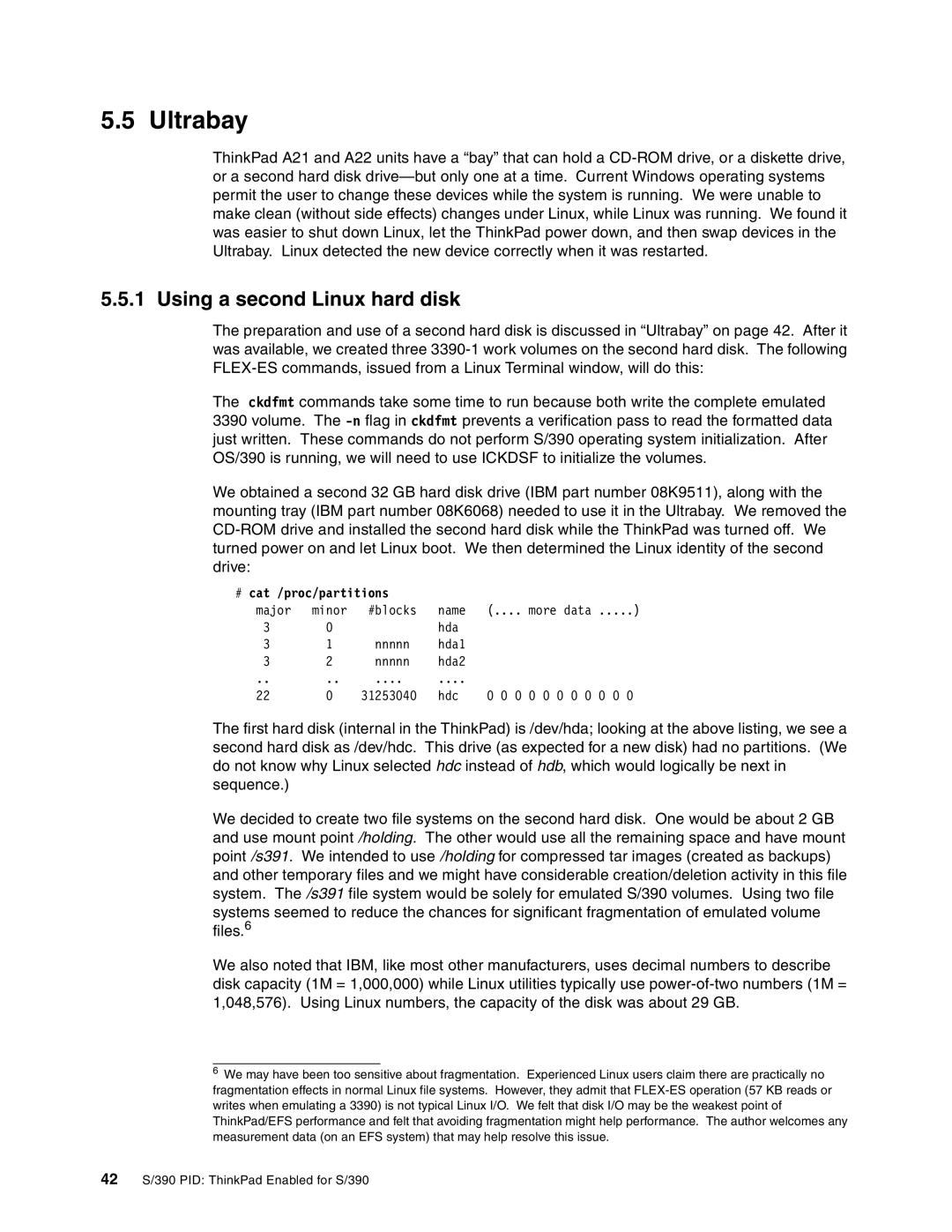5.5 Ultrabay
ThinkPad A21 and A22 units have a “bay” that can hold a
5.5.1 Using a second Linux hard disk
The preparation and use of a second hard disk is discussed in “Ultrabay” on page 42. After it was available, we created three
The ckdfmt commands take some time to run because both write the complete emulated 3390 volume. The
We obtained a second 32 GB hard disk drive (IBM part number 08K9511), along with the mounting tray (IBM part number 08K6068) needed to use it in the Ultrabay. We removed the
#cat /proc/partitions
major | minor | #blocks | name | (.... more data .....) |
3 | 0 |
| hda |
|
3 | 1 | nnnnn | hda1 |
|
3 | 2 | nnnnn | hda2 |
|
.. | .. | .... | .... |
|
22 | 0 | 31253040 | hdc | 0 0 0 0 0 0 0 0 0 0 0 |
The first hard disk (internal in the ThinkPad) is /dev/hda; looking at the above listing, we see a second hard disk as /dev/hdc. This drive (as expected for a new disk) had no partitions. (We do not know why Linux selected hdc instead of hdb, which would logically be next in sequence.)
We decided to create two file systems on the second hard disk. One would be about 2 GB and use mount point /holding. The other would use all the remaining space and have mount point /s391. We intended to use /holding for compressed tar images (created as backups) and other temporary files and we might have considerable creation/deletion activity in this file system. The /s391 file system would be solely for emulated S/390 volumes. Using two file systems seemed to reduce the chances for significant fragmentation of emulated volume files.6
We also noted that IBM, like most other manufacturers, uses decimal numbers to describe disk capacity (1M = 1,000,000) while Linux utilities typically use
6We may have been too sensitive about fragmentation. Experienced Linux users claim there are practically no fragmentation effects in normal Linux file systems. However, they admit that
42S/390 PID: ThinkPad Enabled for S/390
